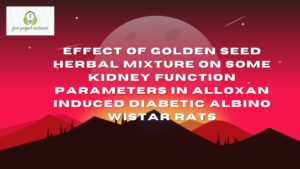TABLE OF CONTENT
Title Page – – – – – – – – – i
Certification – – – – – – – – ii
Dedication – – – – – – – – – iii
Acknowledgement – – – – – – – iv
Table of Content – – – – – – – – v-vi
CHAPTER ONE
1.0 Introduction – – – – – – – – 1-3
CHAPTER TWO
2.1 Description and Distribution of Plantain – – – 4-6
2.2 Cultivation of Plantain – – – – – – 6-9
2.3 Importance of Plantain in Nigeria – – – – 9-11
2.4 Factors Limiting Production and Availability of Plantain – 11-14
2.5 Primary Products of Plantain – – – – – 15-20
CHAPTER THREE
3.1 Medicinal Benefits of Plantain – – – – – 21
3.1.1 Wound Healing – – – – – – – 21-23
3.1.2 Anticancer Activity – – – – – – 23-26
3.1.3 Antidiabetic Activity – – – – – – 26-29
3.1.4 Antiulcer Activity – – – – – – – 29-31
3.2 Medicinal Benefits of Unripe Plantain Sap – – – 31-32
CHAPTER FOUR
4.0 Summary and Conclusion
4.1 Summary – – – – – – – – 33
4.2 Conclusion – – – – – – – – 33
References
CHAPTER ONE
1.0 INTRODUCTION
Plantains (Musa Spp; AAB genome) are plants producing fruits that remain starchy at maturity (Robinson, 1996) and need processing before consumption. Plantain production in Africa is estimated at more than 5% of worldwide production (FAO, 1990). The majority (82%) of plantains in Africa are produced in the area stretching from the low lands of Guinea and Liberia to the central basin of the Democratic Republic of Congo. West and Central Africa contribute 61 and 21% respectively. It is estimated that about 70 million people in West and Central derive more than 25% of their carbohydrates from plantains, making them one of the most important sources of food energy throughout the African lowland humid forest Zone (Swennen, 1990).
Nigeria is one of the largest plantain producing countries in the world (FAO, 2006). Despite its prominence, Nigeria does not feature among plantain exporting nations because it produces more for local consumption than for export. National per capital consumption figures show its importance negative to other starch staples (FAO, 2006). However, these figures do not show regional reliance, which is often very important for highly perishable crops that are usually consumed in or near areas of production.
The consumption of plantain has risen tremendously in Nigeria in recent years because of the rapidly increasing urbanization and the great demand for easy and convenient foods by the non-farming urban populations. Besides being the staple food for many people in more humid regions, plantain is a delicacy and favoured snack for people even in other ecologies. A growing industry, mainly plantain chips, is believed to be responsible for the high demand being experienced now in the country. This study reviewed the trend of plantain production. Its problems and prospects in Nigeria in the last two decades.
The green leaf of plantain is very useful for treating diabetes (Akinyemi et al., 2010). Simply boil the fresh leaves in water. Drink a glassful twice daily. However, pregnant women should not take this preparation, as it is capable of stimulating the uterus, thus promoting miscarriage. The whitish fluid that flows when plantain leaf is cut is very effective for treating wounds, especially fresh wounds. The juice stops the flow of blood very quickly. Perhaps the most medicinal part of plantain is the sap. The sap is present in every part of the plant. By piercing any part of the plant, especially the trunk, one can collect the sap.

